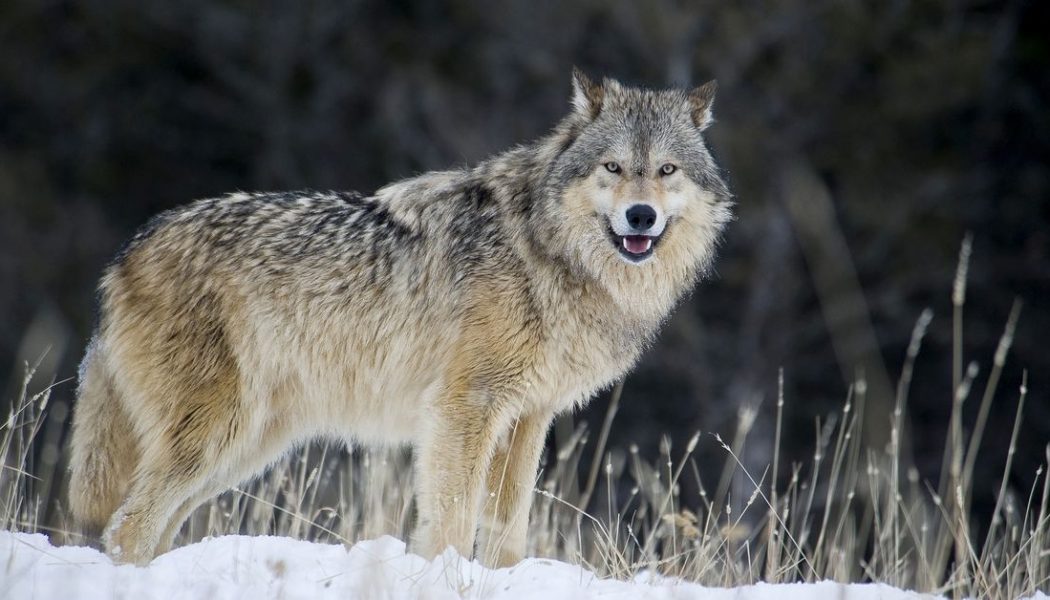
Gray wolves came out on top in a nail-biting Colorado state election that could be a boon for the species across the US. A ballot measure to reintroduce the species in Colorado, Proposition 114, won Tuesday’s election with a narrow lead.
The wolves are native to the state but were completely wiped out there by the mid-1940s. Millions of gray wolves once called North America their home, but they were shot, trapped, and poisoned to near-extinction to make way for western development and livestock.
The passage of Prop 114 is the latest win in a decades-long push to destigmatize “the big, bad wolf” and bring their numbers back. Now the Colorado Parks and Wildlife Commission needs to craft a plan to bring the wolves back to regions west of the continental divide by the end of 2023. There’s a long road ahead to ensure the species’ survival, which also hinges on bringing people together who have been split on what to do with the wolves.
The local victory for fans of the wolf in Colorado is all the more important because it follows what conservationists see as a huge national roadblock for wolves’ recovery. Last week, the Trump administration decided to remove the animal from protection under the Endangered Species Act in the lower 48 states, making the case that they had already successfully made a comeback. (The decision excludes Mexican wolves, a subspecies in the Southwest, whose numbers are sparse.)
Conservationists have signaled that they’ll challenge the decision in court.
“The decision to remove critical protections for still-recovering gray wolves is dangerously short-sighted, especially in the face of an extinction and biodiversity crisis,” Bonnie Rice, senior representative for Sierra Club’s Our Wild America Campaign, said in a statement. “We should be putting more effort into coexistence with wolves and reinstating endangered species protections critical for their full recovery.”
The animals have only returned to about 10 percent of their historic range in the US, according to conservationists. Their populations are fragmented, but bringing gray wolves back to Colorado has the potential to help bridge gaps between packs in the Great Lakes, the Northern Rockies, and the West. That would lead to more genetic exchange and healthier future generations of wolves, according to Diana Tomback, a professor of integrative biology at University of Colorado Denver who has also served on the science advisory team of the Rocky Mountain Wolf Project. “It makes the future of the gray wolf in the lower 48 much more certain,” Tomback says.
Protections for gray wolves from state to state are patchy. In Colorado, they’re still listed as an endangered species. But across the border in Wyoming people are allowed to kill them.
Prop 114 marks the first time voters have made the call on whether or not to reintroduce an animal, a spokesperson for Coloradans for Protecting Wildlife told National Geographic. Votes were pretty split between big urban and rural areas, with ballots from communities around cities like Denver, Boulder, and Colorado Springs pushing the ballot measure over the edge.
“[Wolves] are a very symbolic species,” says Rebecca Niemiec, an assistant professor in the Human Dimensions of Natural Resources Department at Colorado State University. For some, wolves represent a broader mission to make amends with wilderness, she says. For others, the encroaching wolves might signal a threat to a way of life they’ve become accustomed to, without neighboring predators. There have also been tensions because of a perception that city-dwellers are influencing policies that directly affect other communities living closer to the wild.
Bringing all of those perspectives together will be an important next step after the election. “Research shows that with these contentious issues, if we don’t bring together people with these diverse values — actually together in a room to engage in shared dialogue and shared decision-making — then conflict between people over wolves can actually escalate. And this can result in negative outcomes for both people and for wolves,” Niemiec says.
Prop 114 stipulates that ranchers should be compensated for any livestock they lose. But fair compensation might mean more than a simple cash payout, Niemiec points out. Her work with local stakeholders has found that additional emotional and stress-related pressures can come with preparing for wolves’ comeback. Local ranchers, Native American tribes, hunters — pretty much everyone with skin in the game — can all help officials determine what compensation is appropriate. It might involve additional compensation for any indirect effects the wolves might have, like how livestock losses affect the genetic health of the herd, for example. That could foster more support for the wolves moving forward. Prior to this year’s polarizing election, recent research already found relatively similar levels of tolerance for wolves across different demographics in the state, including among ranchers and hunters.
When wolves come back, they’re much more likely to stick to their typical diet of deer and elk than to turn to livestock. Wolves kill less than 0.01 percent of cattle each year in the northern Rockies, according to Tomback. They’re also typically shy and stay away from humans. One study of wolf encounters in Alaska and Canada between 1900 and 2000 found only 16 cases of wild, healthy wolves biting people, of which six cases were severe. No wolves were documented killing any person in North America in the same time period.
The wolves’ return could also restore some balance to ecosystems by culling sick deer and elk in herds that have had an uptick of chronic wasting disease, an illness similar to mad cow disease. Gray wolves might have helped stabilize elk populations in Yellowstone National Park after they were reintroduced there in the 1990s.
The wolves have also become an attraction for admirers hoping to catch a peek of them from afar at the park. The same could happen in Colorado, says Tomback. Even though the wolves are likely to lead private lives in the wilds of Colorado, people might encounter them from a distance — and that’s something to celebrate, rather than to fear, Tomback points out.
“People who like to hike and backpack, they will be treated to the occasional fleeting glimpse of a wolf, maybe. Maybe while they’re camped, they’ll hear the howl of a wolf at night,” Tomback says. “These are things that signal the fact that all is right ecologically, that wildness has returned.”










